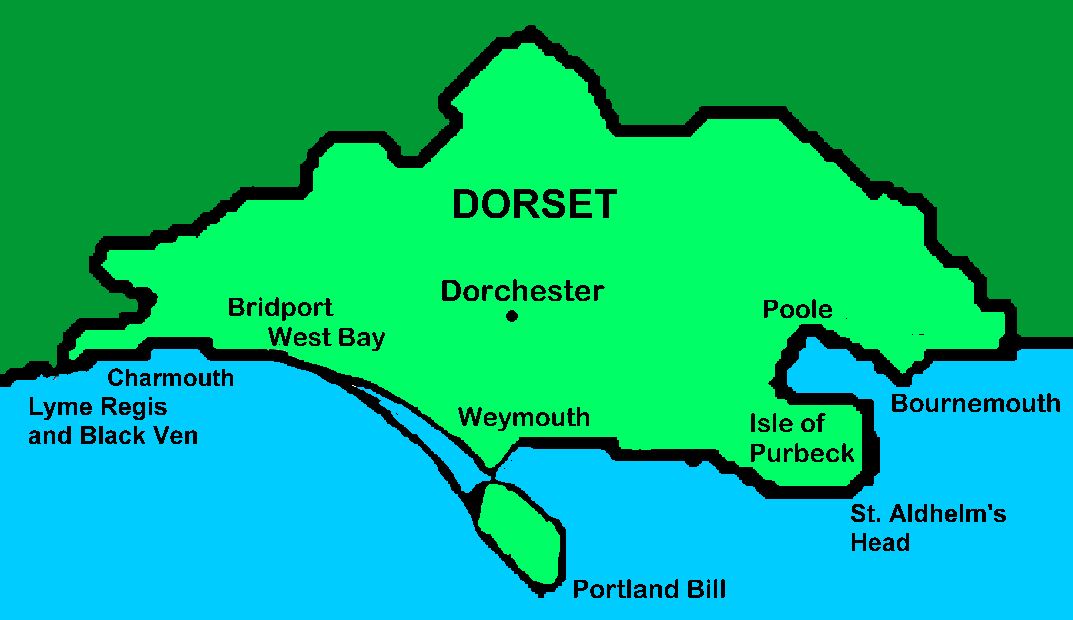
Click on place name for more information
Dorset has a varied landscape, from heathland in the south and east, to rolling downland in the north and west. This landscape and the uses to which it is put are dependent on the underlying geology. The best place to see the foundations of the county is the coast, where erosion by the sea is revealing new outcrops of rock. It is also generally easier to get access to the coast, as opposed to inland sites, e.g. quarries.
The Dorset coastline is itself varied and has many types of beach and shoreline; again the geology and man influence this.
In Dorset it is possible to walk from the oldest rocks in the west, through the entire Jurassic Marine sequence, and on into the younger rocks of the Cretaceous and Tertiary periods.
The oldest rocks that outcrop on the Dorset coast are found at the Western end of the county. These are the Jurassic shales, mudstones and limestones of Lyme Regis and Charmouth. The rocks here are very striking because of the repeating layers of hard limestone and soft mudstone. They are also very soft and are prone to Landslides, the largest of which is the famous Black Ven landslide complex.


